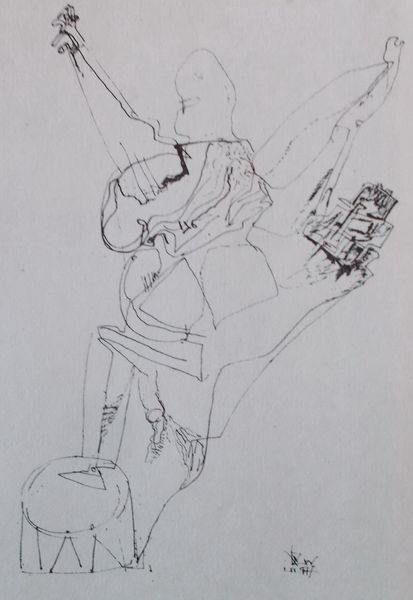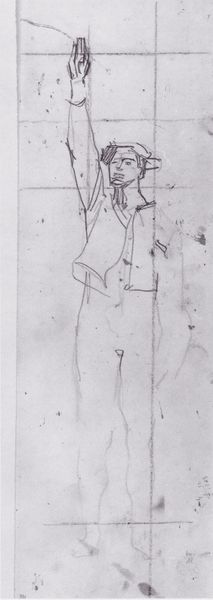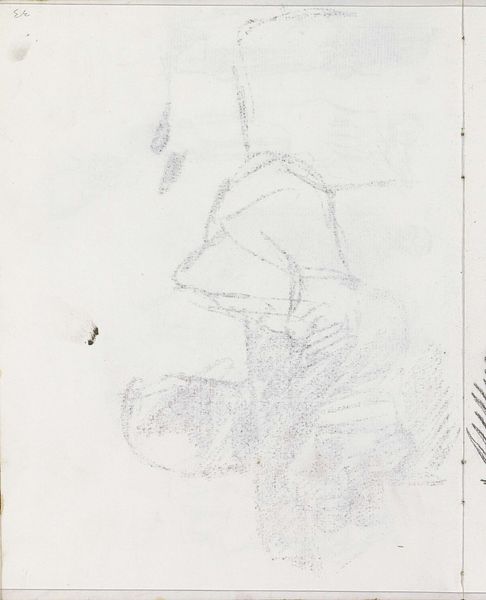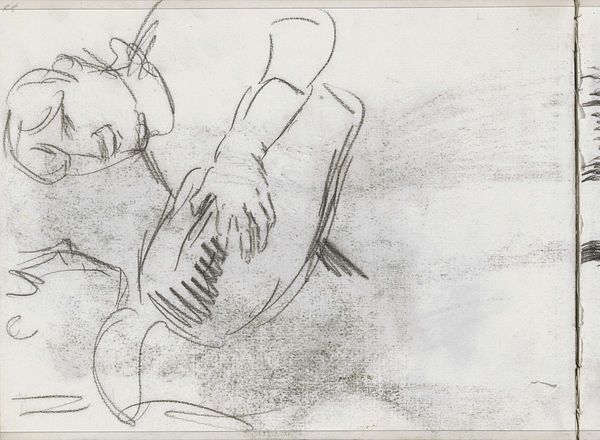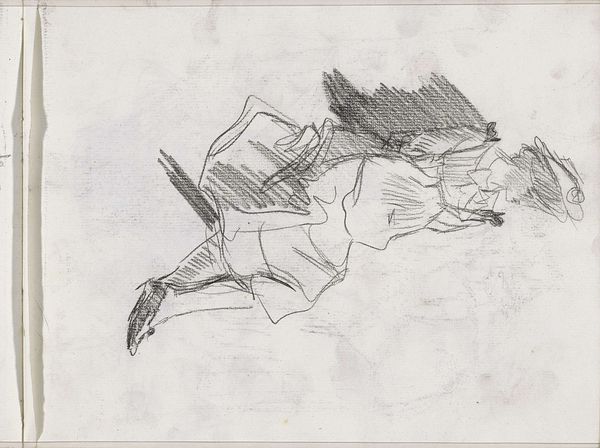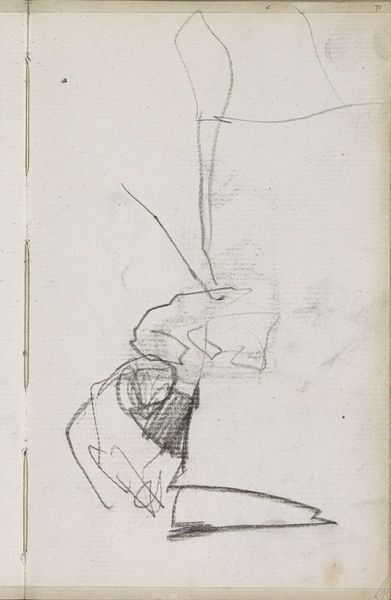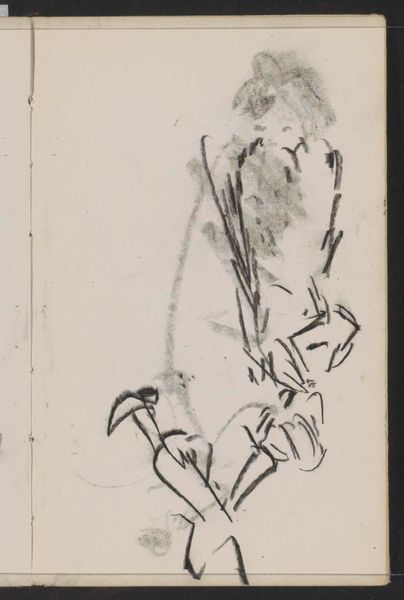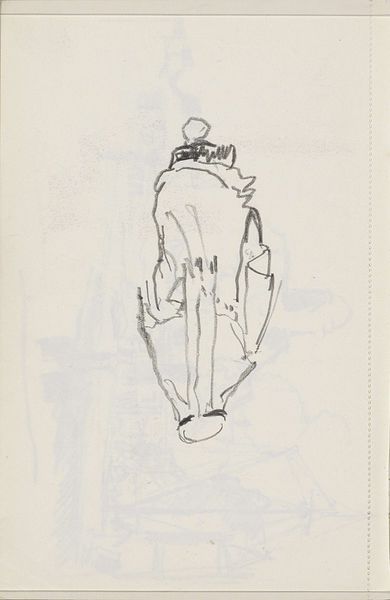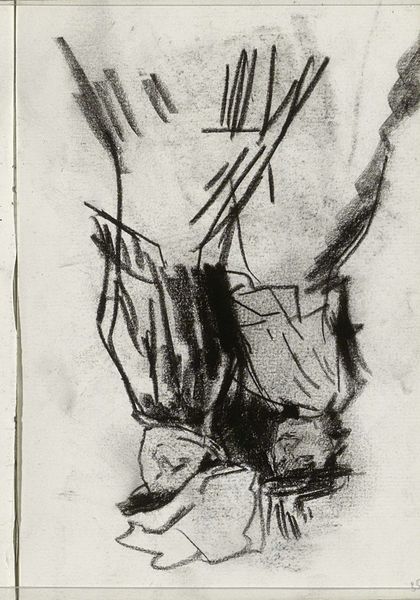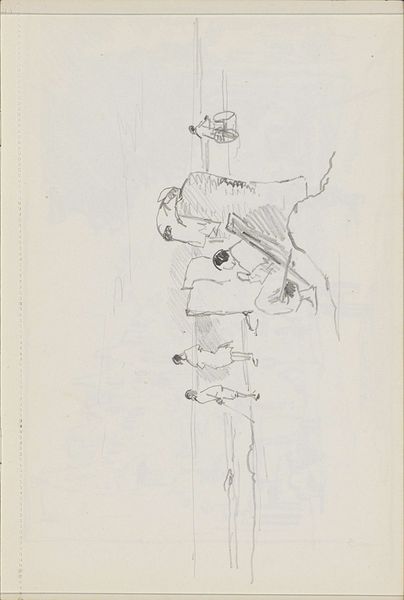
drawing, pencil
#
portrait
#
drawing
#
medieval
#
figuration
#
sketch
#
pencil
#
line
#
academic-art
#
arm
Dimensions: 28.7 x 12.8 cm
Copyright: Public domain
Curator: Standing before us is Ferdinand Hodler's "Standing Warrior," created in 1899 using pencil. It’s a relatively small drawing, really more of a study. What are your first thoughts on encountering this figure? Editor: I’m immediately drawn to the fragility of the line work, yet it depicts something so overtly, historically, masculine. All that armor… It gives it a potent material contrast in my eyes. The vulnerability of the sketch, against the brute force the armor represents. Curator: That's an interesting observation, particularly considering Hodler’s engagement with nationalism at the time. Think of Switzerland’s self-image: neutral, yes, but also prepared, historically martial. How does that context play into his approach to depicting such a figure? Editor: The materials certainly suggest this might have been just a draft for another medium, which seems to highlight his interest in showing all the physical labor he took into portraying a romanticised warrior, but does that excuse the context in which he created this artwork? Curator: The intent versus impact of his images during an era of intense nationalistic fervor is, frankly, difficult to parse out. Can we separate his artistic intent, possibly aimed at portraying a sense of stoic duty, from its potential use in reinforcing societal militarism? That is a broader debate of identity. Editor: Indeed. Hodler probably understood the material production involved in the art, more so than in real warfare; he’s showing the craftsmanship of even the initial conceptualization here. The way light bounces off metal and folds in clothes… He's capturing the sheer volume, weight, cost, and societal values attached. Curator: The level of meticulous, academic detail here can certainly be construed in multiple ways, particularly given Hodler’s later involvement with symbolism and abstraction. It really offers insight into artistic movements, their process and where we can take a deeper look at context to deconstruct intent. Editor: Absolutely. It underscores that materials, context, and the physical making of an object are as vital as any potential symbolism or message it might convey. Curator: Seeing this really is about confronting difficult histories and creative interpretations in an era with rapidly changing artistic representation, not everything is always as clear cut.
Comments
No comments
Be the first to comment and join the conversation on the ultimate creative platform.
